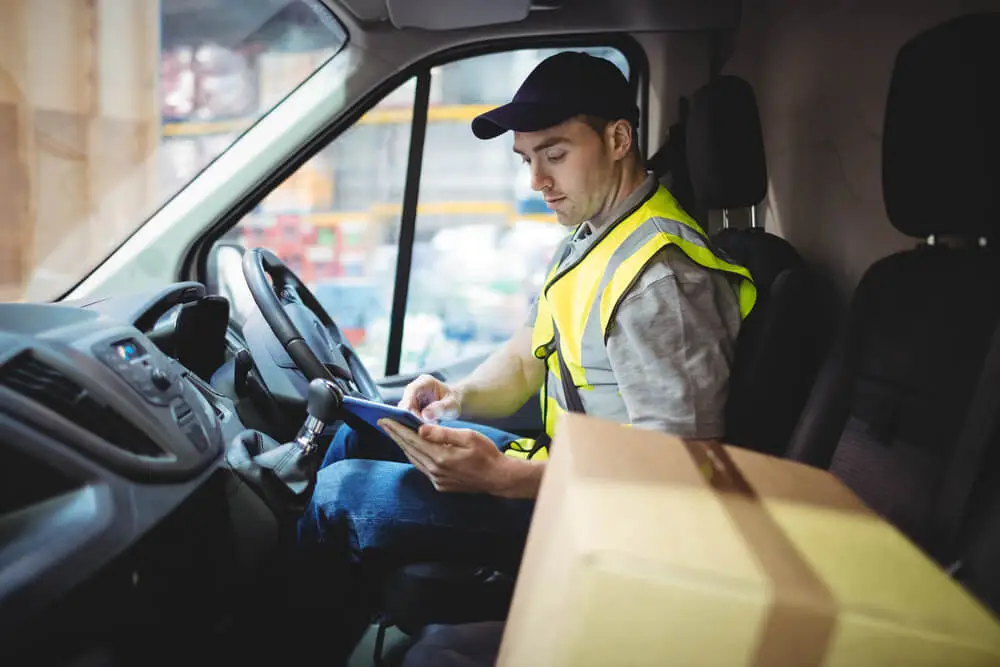When managing a large fleet of vehicles, ensuring operational efficiency, smooth operation, and safety for drivers, vehicles, and cargo can be a major challenge if you don’t have the right technology. Enter advanced geofencing solutions from Crystal Ball.
A boon for large fleet management, geofencing technology allows you to monitor fleet activities within defined zones. This brings a range of benefits that go far beyond merely knowing where vehicles are at any given time. Learn about fleet geofencing benefits and how to put theory into practice below.
Advanced Geofencing Use Cases
Before exploring the biggest benefits of advanced geofencing for managing large fleets, let’s take a look at some of the large fleet management use cases:
Construction and heavy equipment: Use geofencing technology to restrict the movement of heavy equipment on construction sites. This can prevent equipment and machinery from being moved offsite without authorisation.
Delivery services: Set up geofences around delivery zones to receive notifications when fleet vehicles enter and leave these zones, ensuring timely deliveries and boosting customer satisfaction.
Public transportation: Use fleet tracking with geofencing to monitor bus routes and the number of buses in specific zones during peak hours. This can help enhance punctuality and improve route adherence by ensuring that buses and other vehicles do not deviate from their designated routes.
Vehicle leasing and rentals: Monitor the use of your vehicles with advanced geofencing technology to reduce vehicle theft risks and ensure rental agreement compliance.
Fleet Geofencing Benefits
The advanced use cases described above contain some clues to a few fleet geofencing benefits. Let’s explore them in more detail.
Unauthorised use detection: Configure geofences around areas where vehicle access is restricted and locations such as fleet garages, parking lots, and worksites to alert you whenever vehicles leave them. Using geofencing technology for fleets in this way enables you to identify unauthorised vehicle use quickly and address it appropriately.
Asset protection: Configure your advanced geofencing software to send alerts immediately if any vehicles leave geofenced areas outside work hours. You’ll be notified of any unauthorised movement of vehicles from geofenced sites, operational zones, parking areas, and storage facilities so that you can alert security or the police.
Recovery assistance: Use fleet tracking with geofencing increases the chances of recovering any vehicles that are stolen. In addition to being alerted to the vehicle’s breaching of any virtual boundaries, you can trace the vehicle’s movements and see its precise location in real-time.
Optimised route adherence: Geofence areas of operation and analyse vehicle entry and exit times at different points to identify efficient and inefficient routes. Configure geofences along designated routes to be alerted to vehicles leaving these routes. This can help ensure that drivers adhere to efficient designated routes.
How to Set Up Geofences
To make the most of the advanced geofencing feature in Crystal Ball’s fleet vehicle tracking system, you need to understand the basics. These include how to set up geofences and geofencing alerts, configure entry and exit points, and automate response actions when geofence boundaries are breached.
But before you get to that, you first need to decide what types of geofences to set up.
Types of Geofences
The different types of geofences you can set up using geofencing technology for fleets include:
Park fence: Set park geofences around parking areas, garages, and specific parked vehicles for immediate alerts if vehicles are stolen, used without authorisation, or towed away.
Proximity fence: Use geofences to create buffer zones and configure alerts to receive notifications whenever vehicles enter or leave these areas so you know how close they are to a specific location.
Route fence: Set route geofences with via points along specific routes to limit your fleet’s movements to these roads.
Spot fence: Use our advanced geofencing software to set up geofences for small locations or spots on the map, such as delivery and/or pickup points, designated filling stations, or your office, and configure alerts for immediate notifications when vehicles enter, stop, or exit these spots.
How to Set Up Geofencing
When you know what types of geofences to set up using Crystal Ball’s fleet tracking with geofencing software for large fleet management, you’re ready to go. Follow these tips for setting up geofencing alerts, configuring entry and exit points, and automating response actions:
Create a Geofence
- Log in to Crystal Ball’s fleet tracking system and select the Geofencing option
- Find and click the location on the digital map
- Enter the radius size or click and drag to set a virtual perimeter
Set Up Geofencing Alerts and Automated Responses
- You will be given the option of configuring alerts and automating responses when creating geofences
- Choose which events should trigger alerts, such as a vehicle leaving a designated area
- Enter a time frame, if relevant
- Choose who receives which alerts, how frequently they should receive alerts, and which communication methods should be used
Leverage Geofencing for Large Fleet Management
With fleet geofencing benefits such as enhanced asset protection, optimised route adherence, and unauthorised usage prevention, it’s clear that this technology can turbocharge large fleet management. Gain greater visibility of your vehicles, improve operational efficiency, tighten security, and reap other benefits for your business with Crystal Ball’s advanced geofencing system.
Get in touch with us to learn about what our solutions for fleet tracking with geofencing can do for you.

